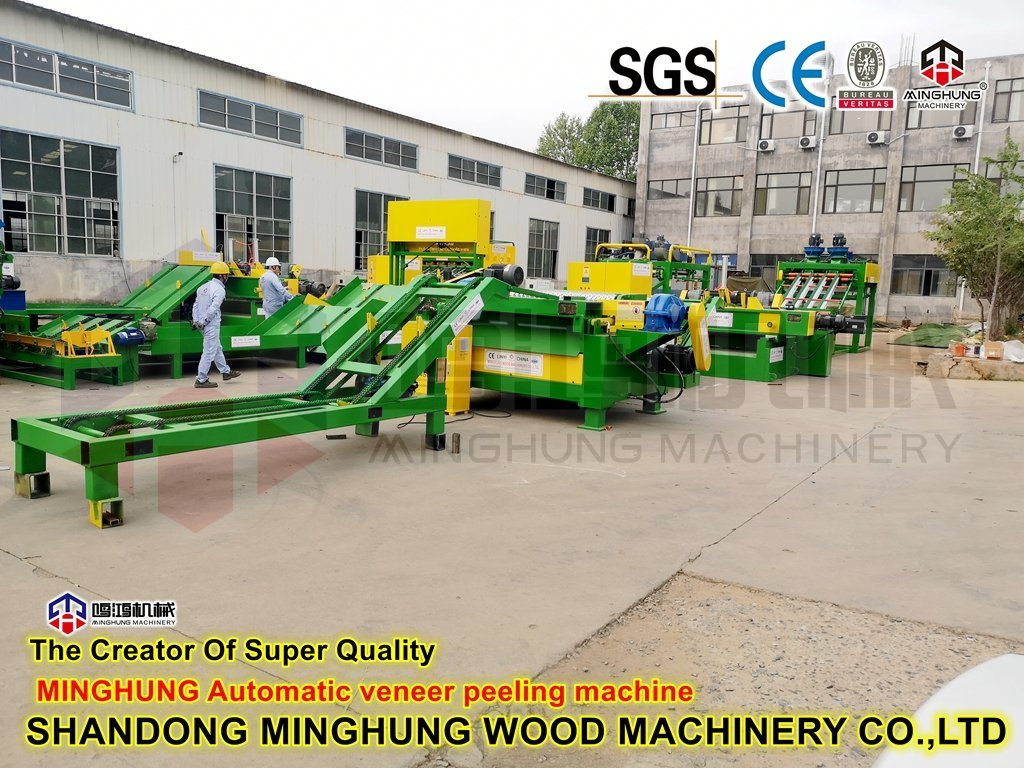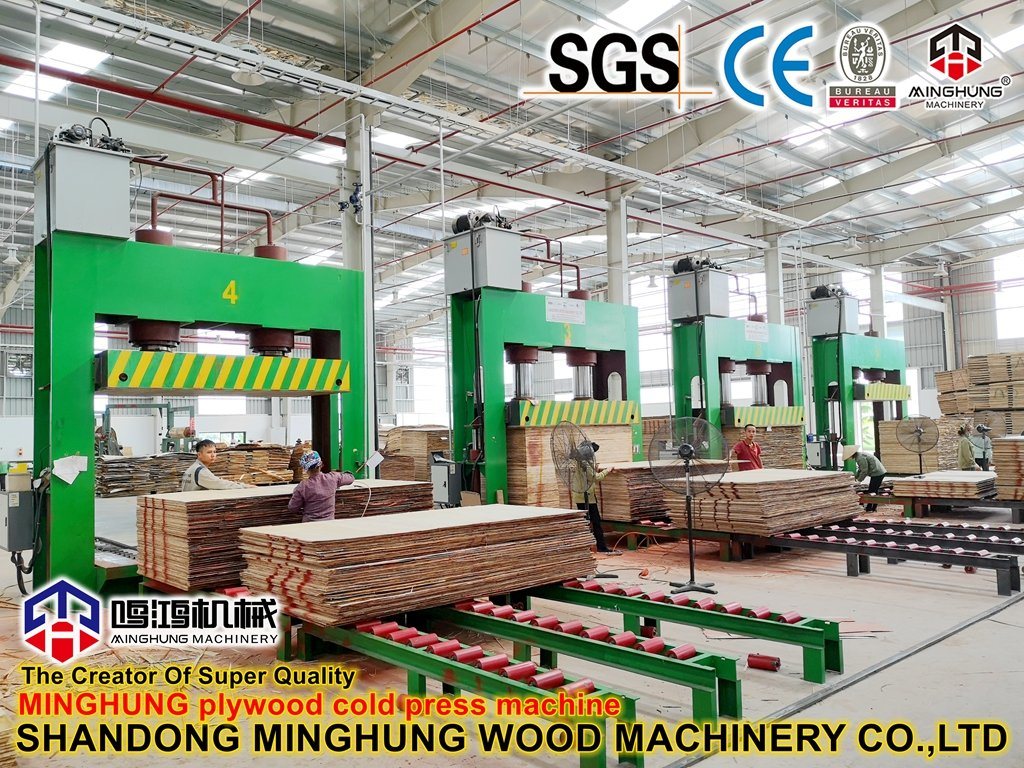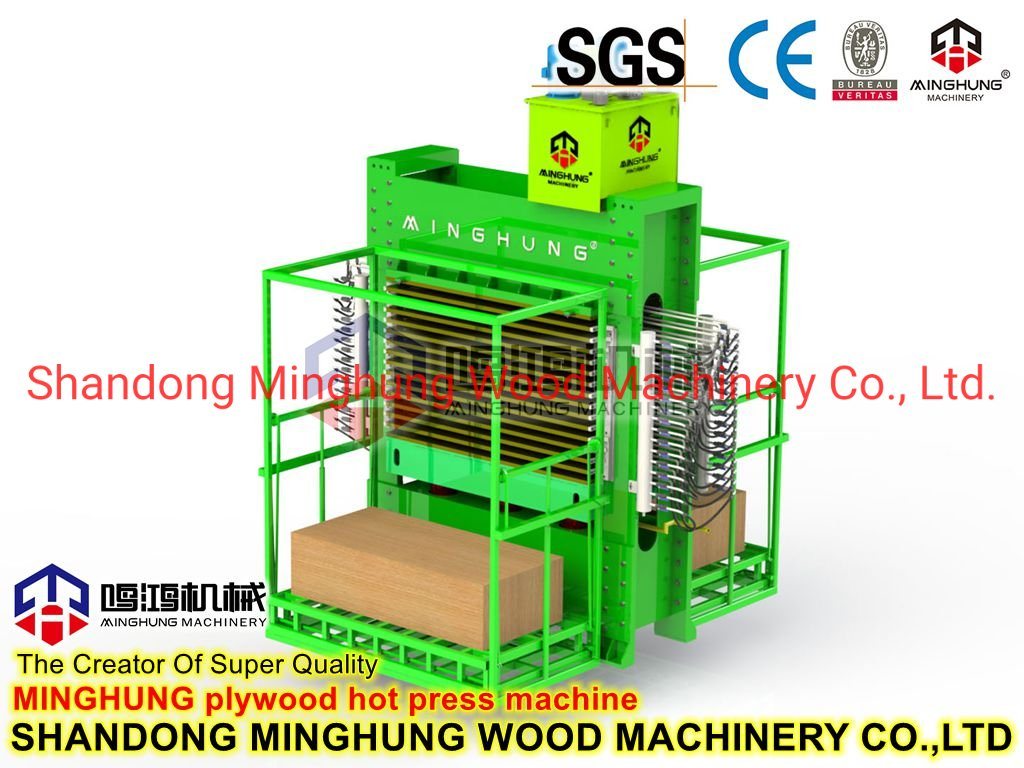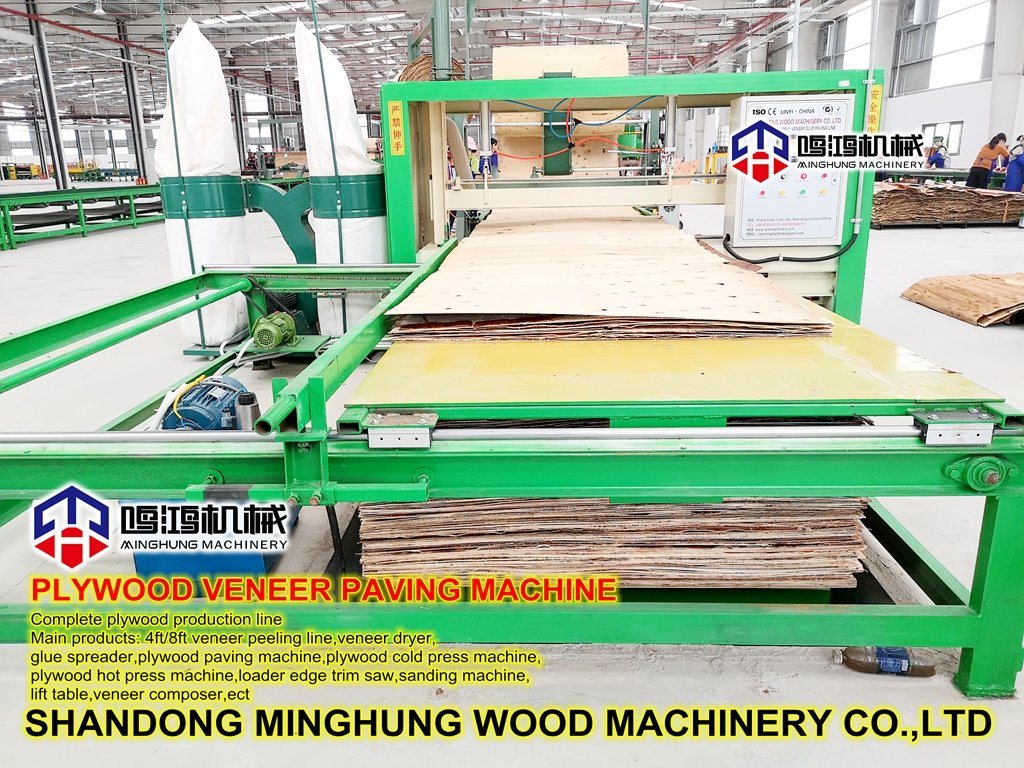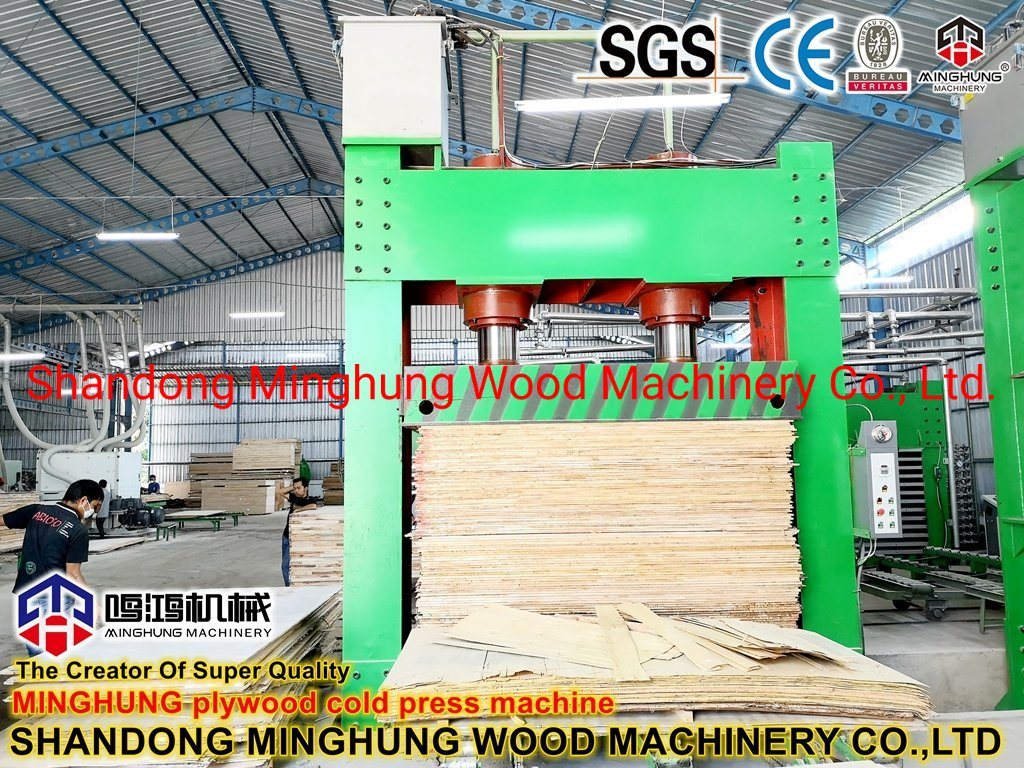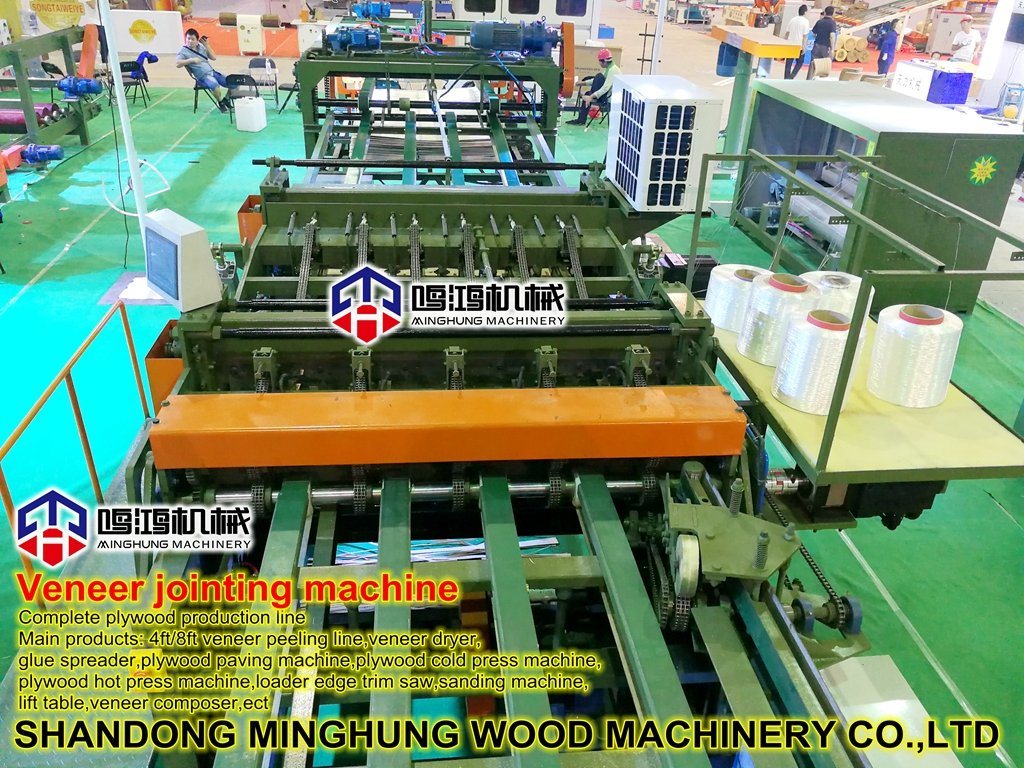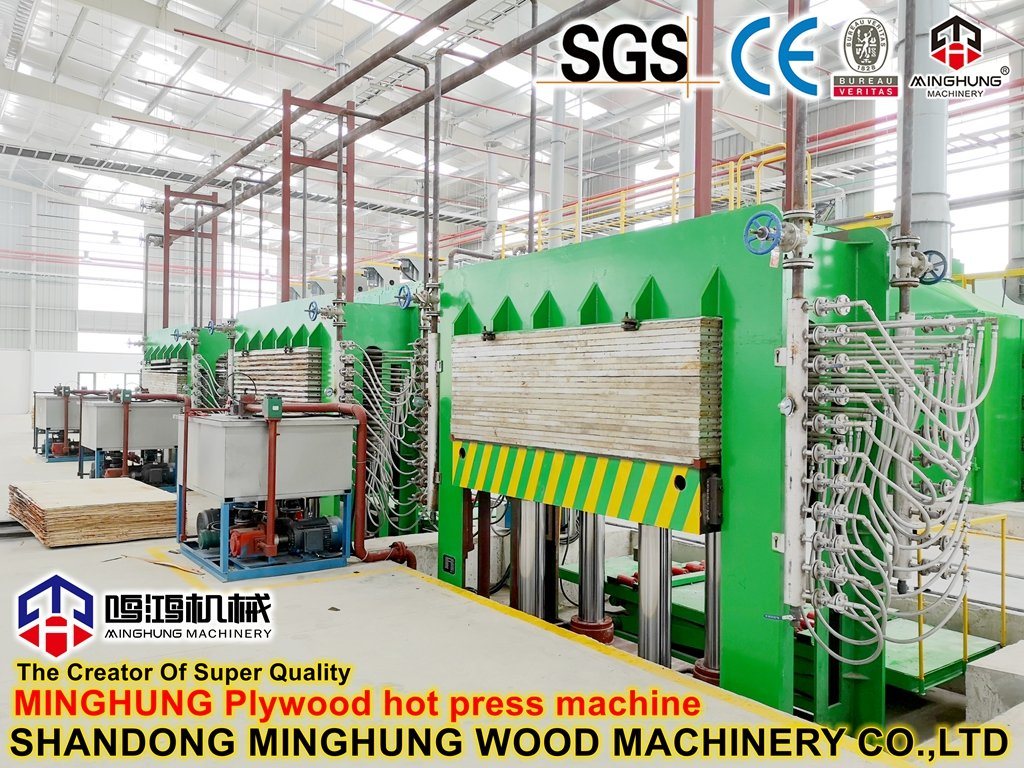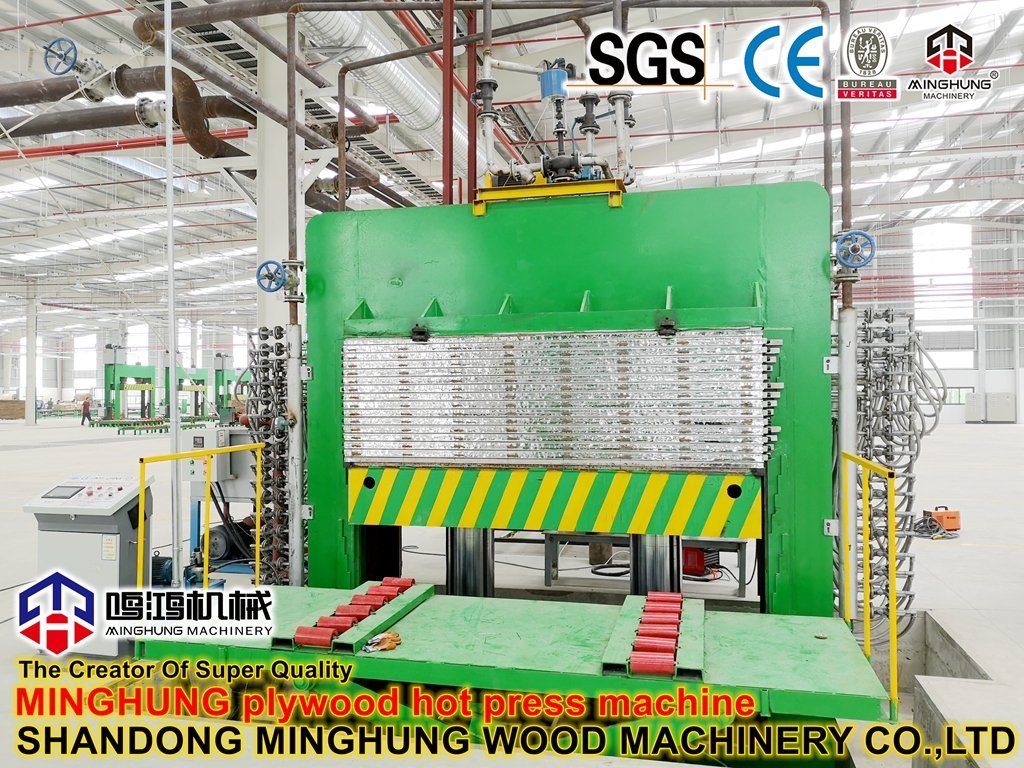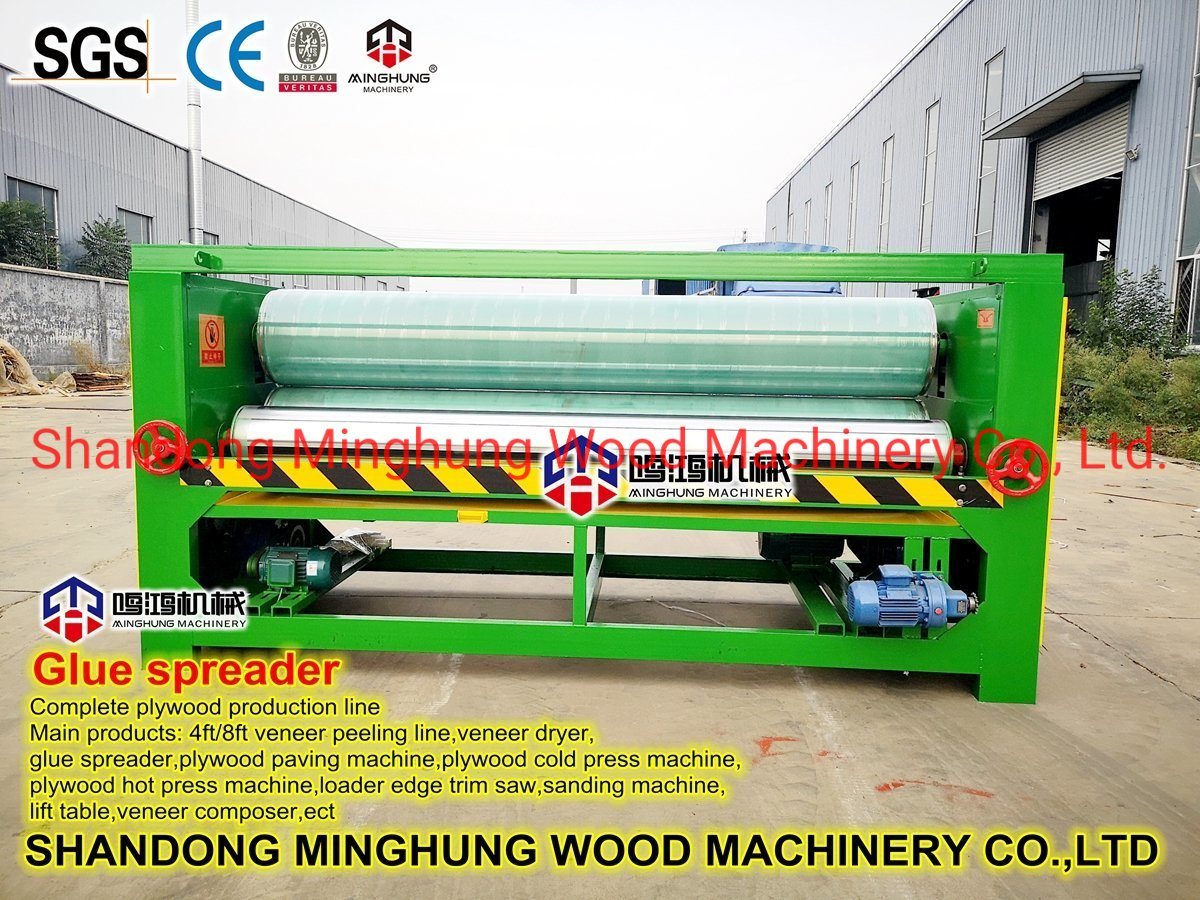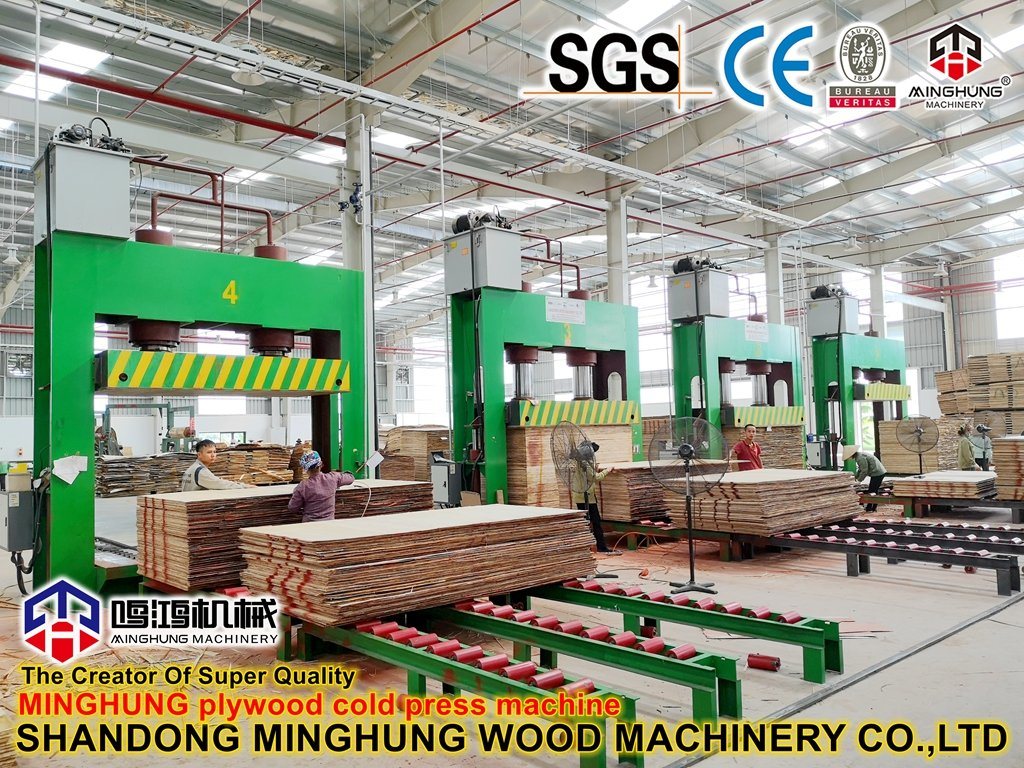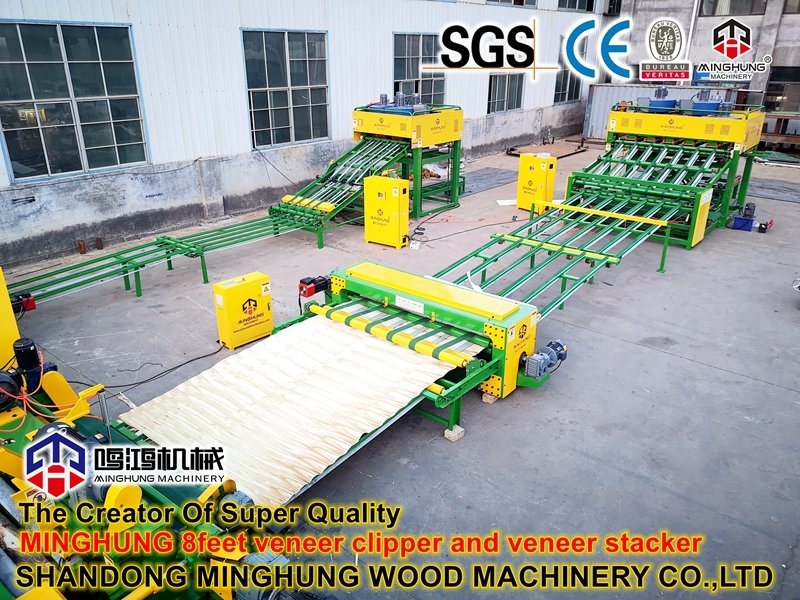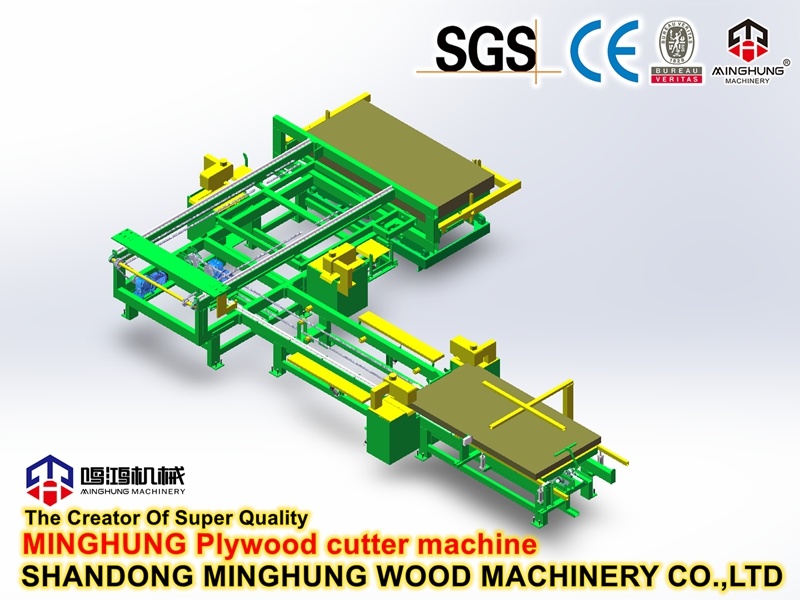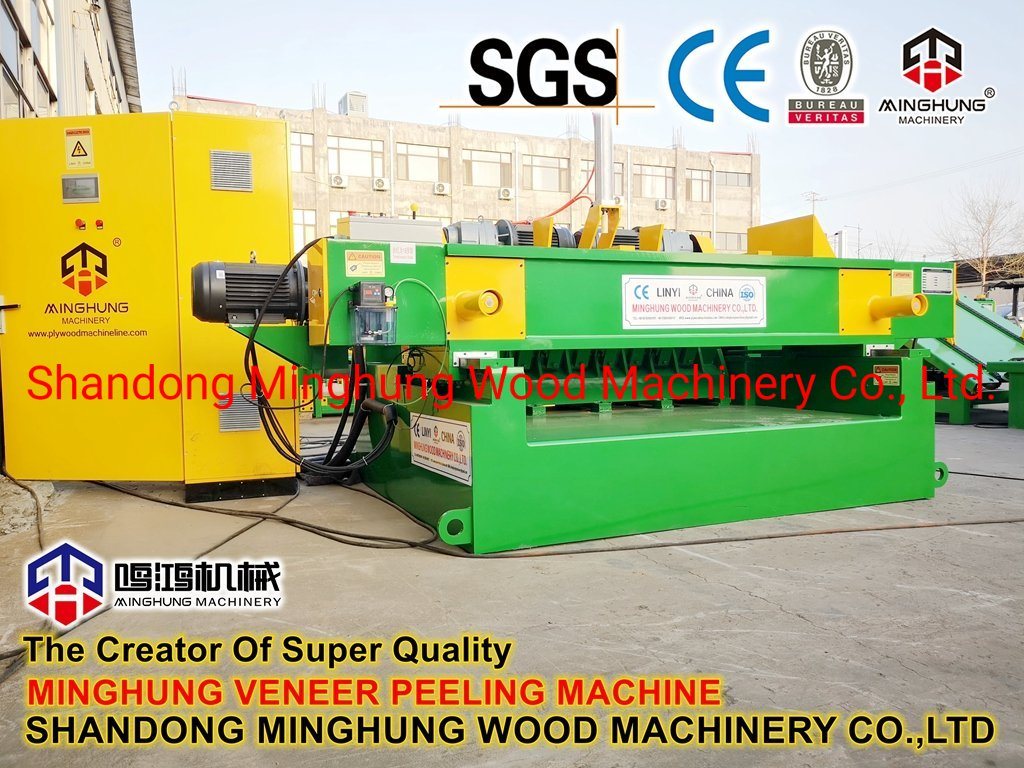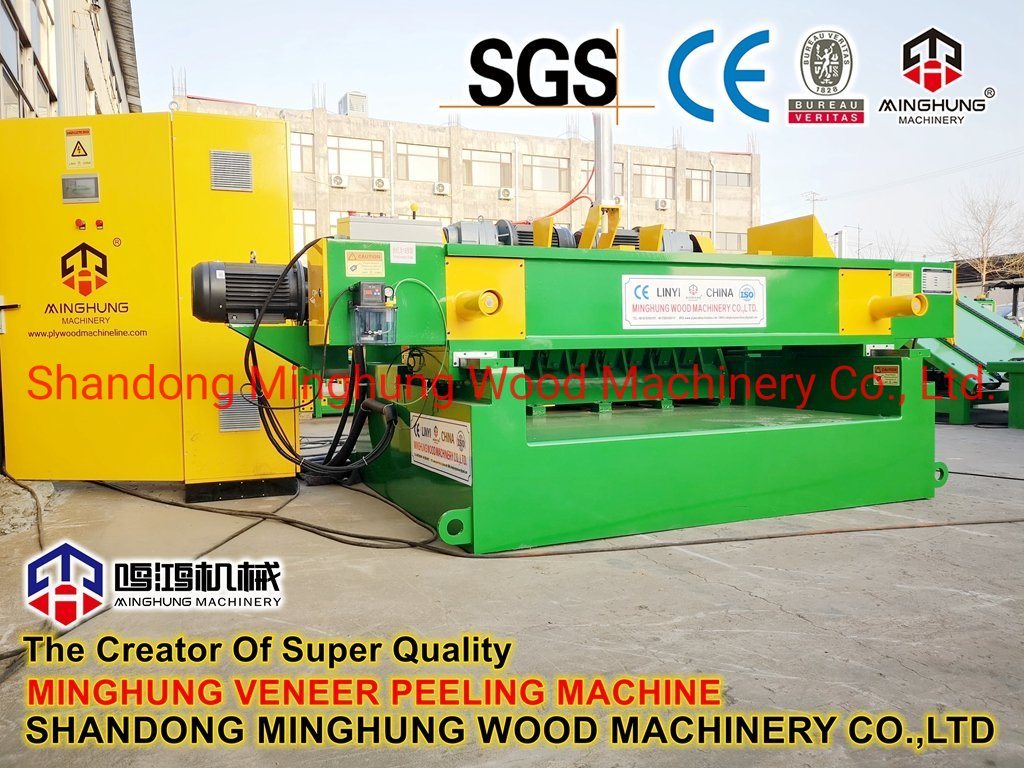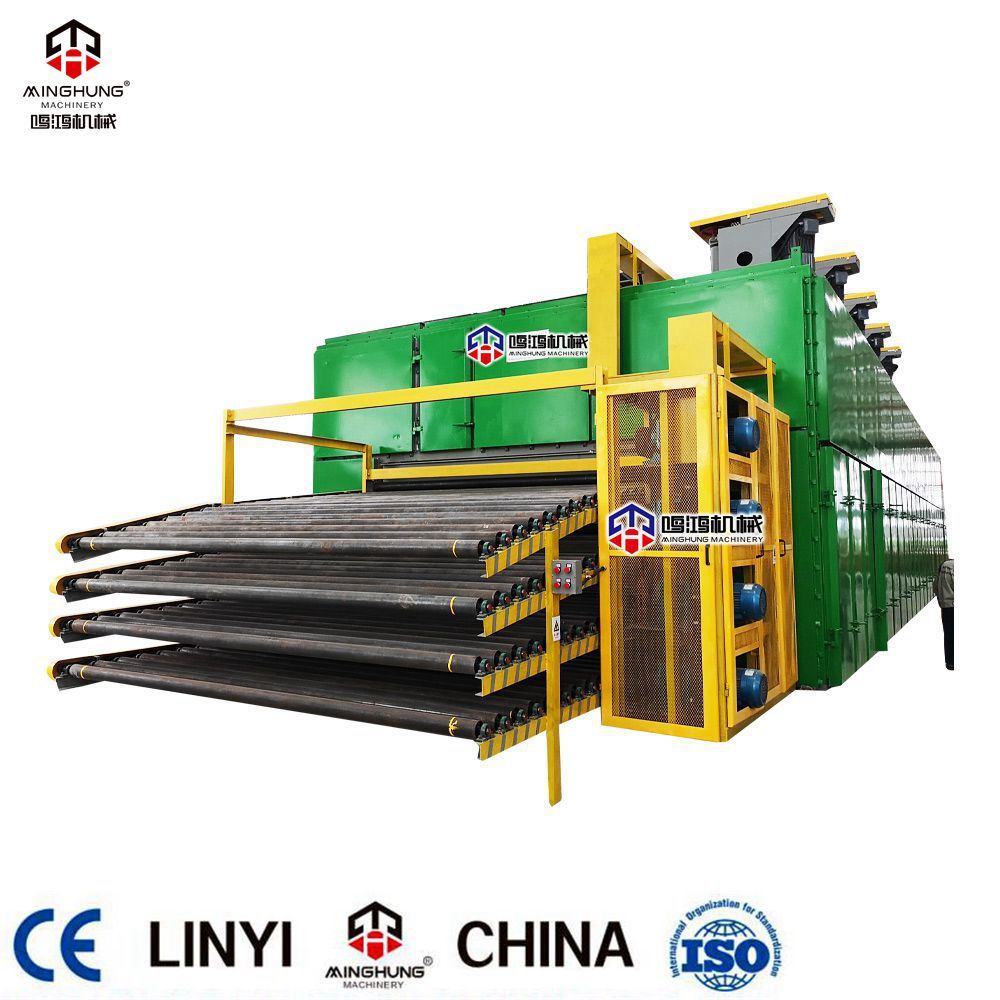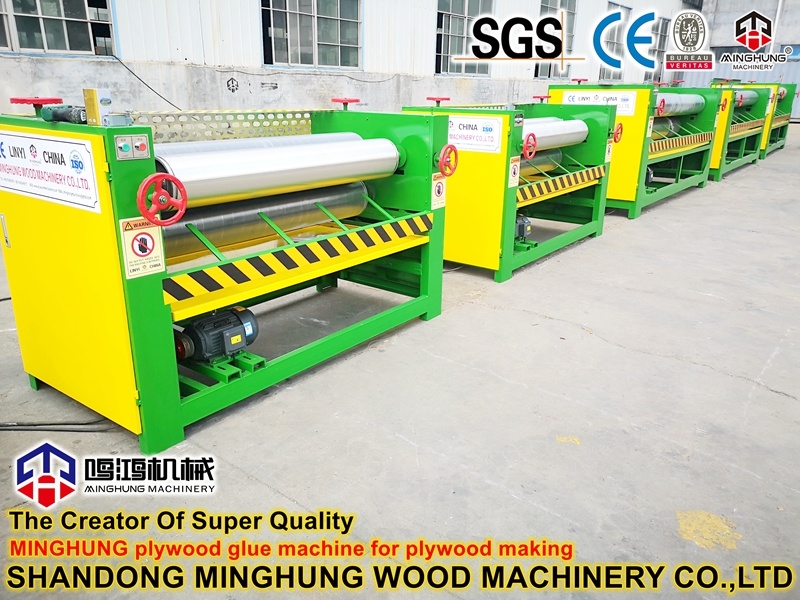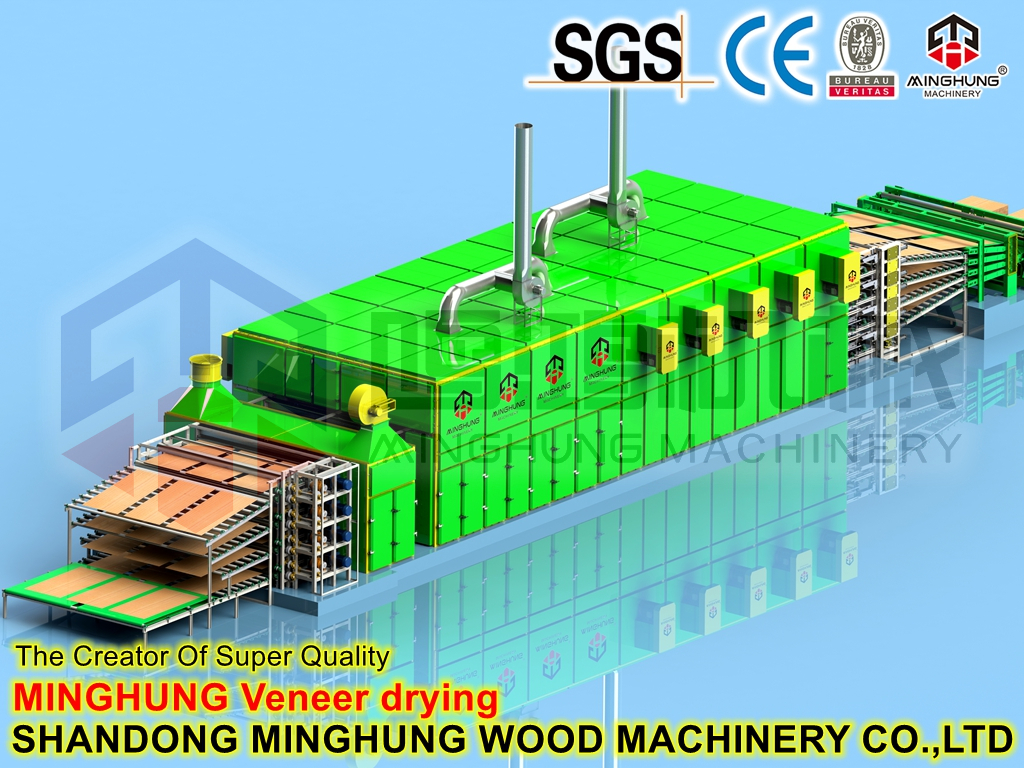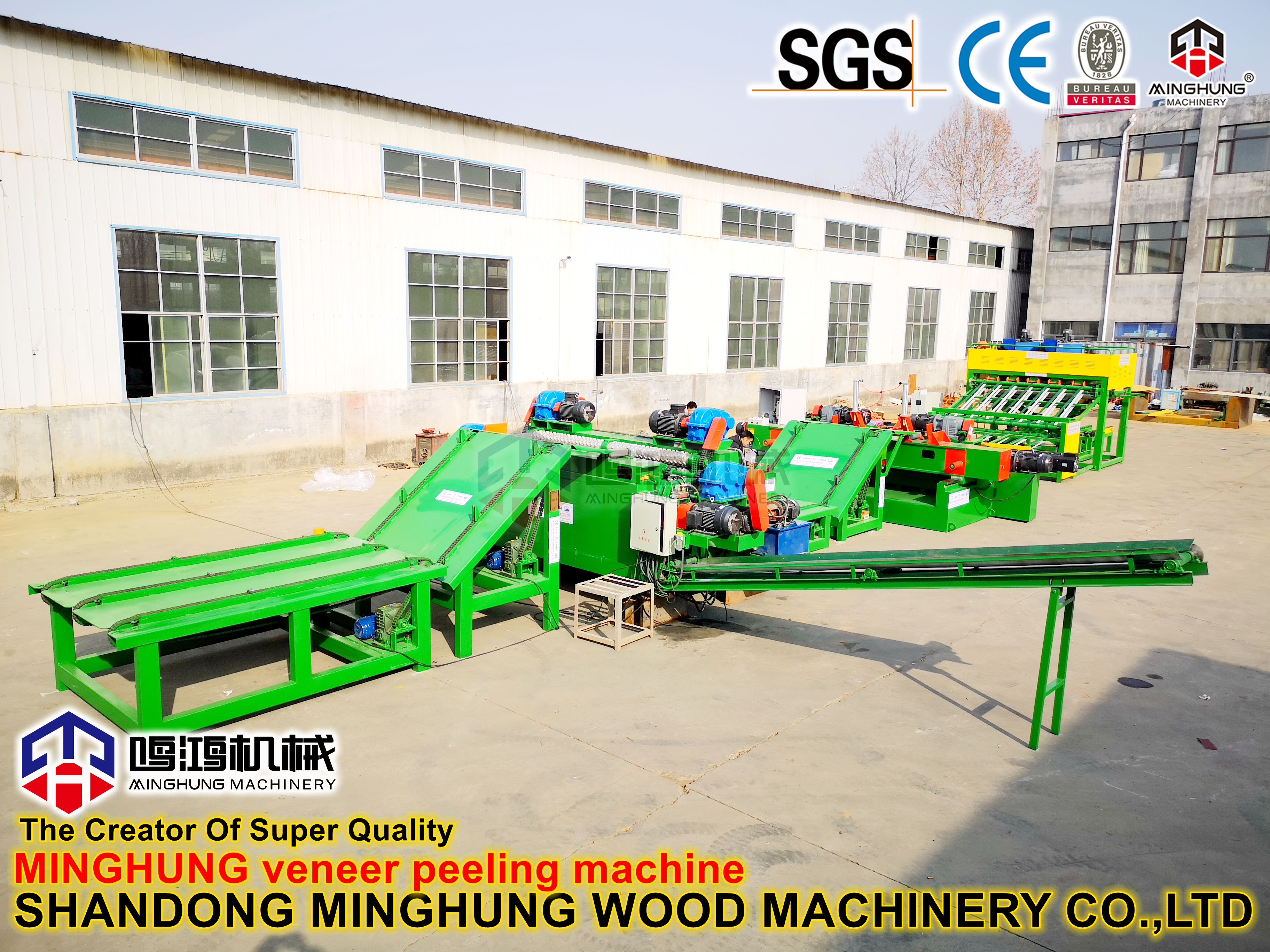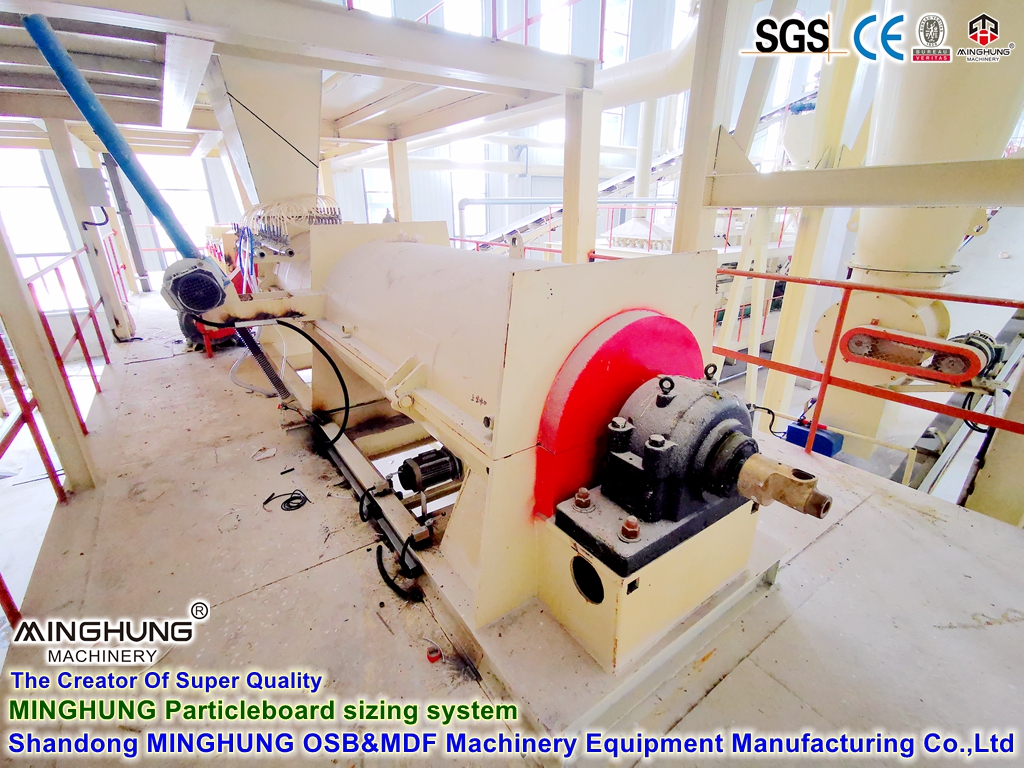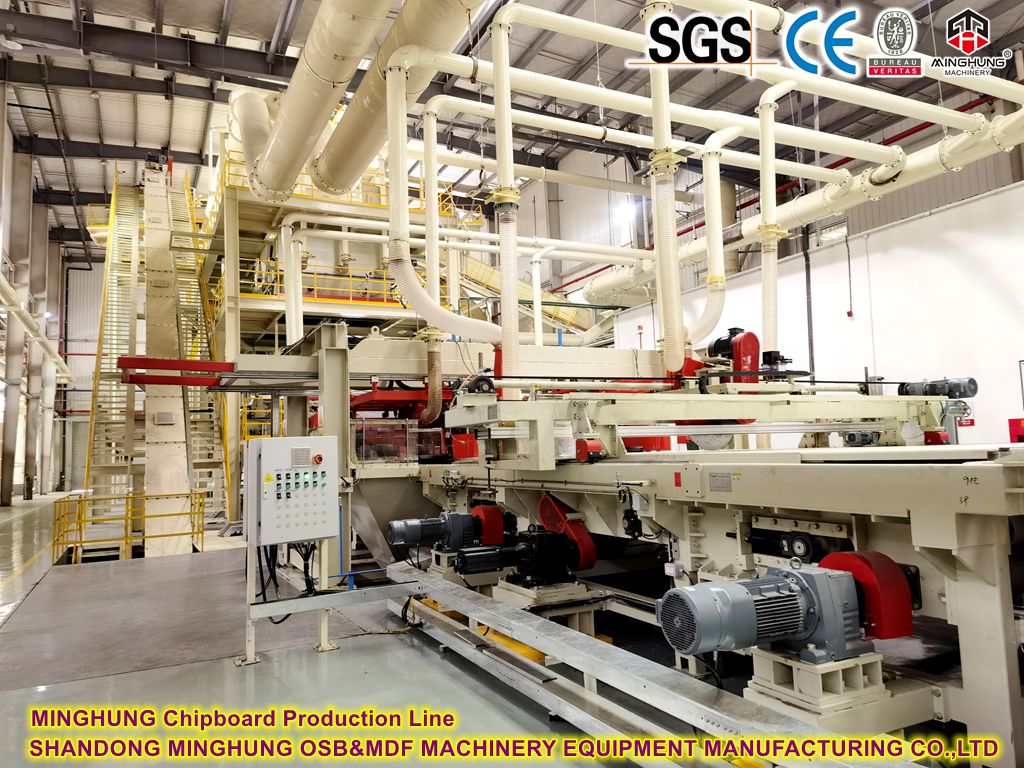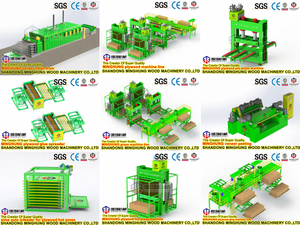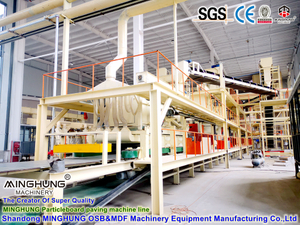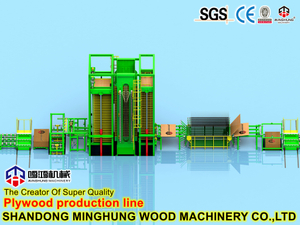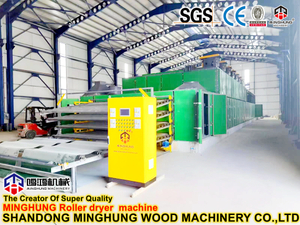The continuous flat press is an extremely large and complex system, comprising these core components:
1. Main Frame:
Massive welded steel structure forming the press skeleton.
Bears the enormous pressing force (typically thousands or tens of thousands of tons), requiring extremely high rigidity and stability to minimize deflection during pressing.
Includes guidance systems ensuring precise and stable vertical movement of the upper platen.
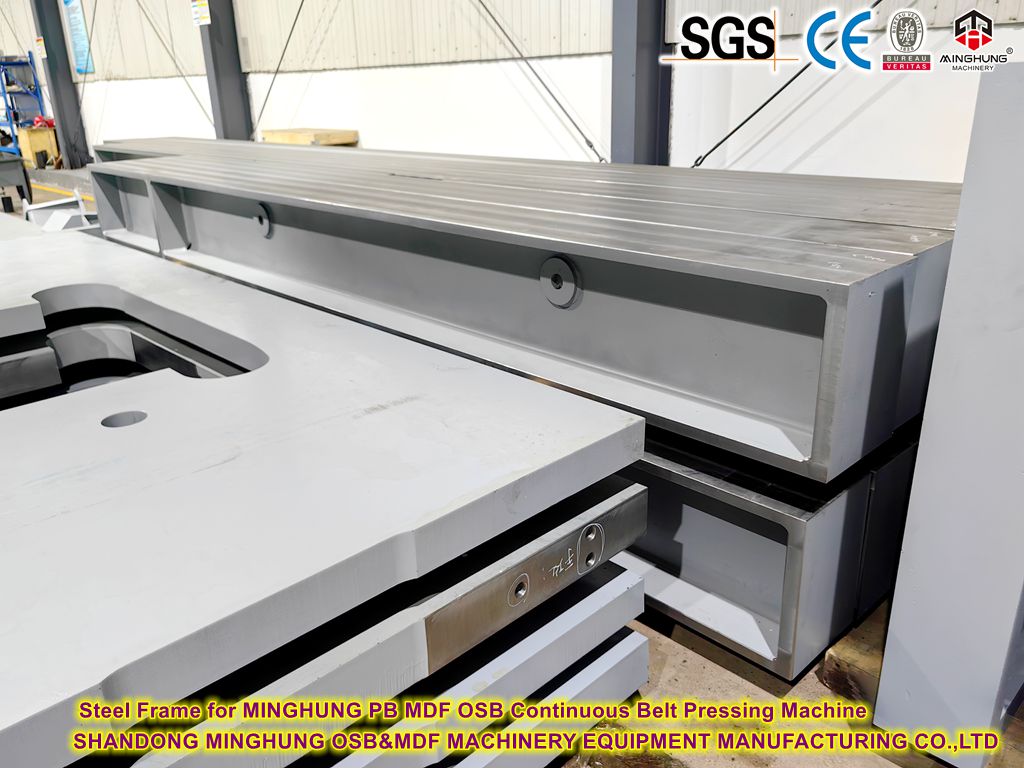
steel frame for MINGHUNG continuous pressing machine
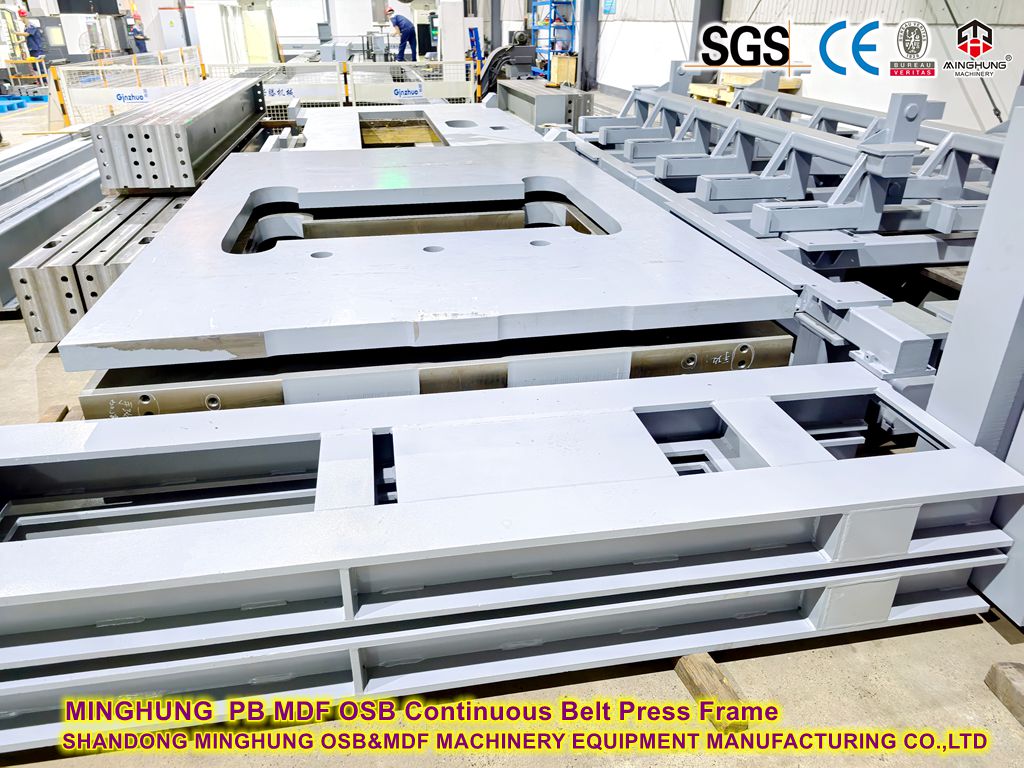
steel structure for OSB
2. Heated Platen System:
Upper Platen: Typically a single massive thick steel plate or a combination of plates, containing dense internal pipe networks for heat transfer fluid circulation. Driven vertically by hydraulic cylinders.
Lower Platen: Similarly massive and thick, fixed to the main frame, also containing heating channels.
Material: High-strength alloy steel, resistant to wear, high temperature, with good thermal conductivity.
Heating Medium Channels: Precisely designed drilled holes or milled grooves ensure uniform heat distribution.
Zoned Heating: Typically divided into multiple independently controlled heating zones along the press length, allowing precise temperature profile control at different pressing stages (prevents surface pre-cure).
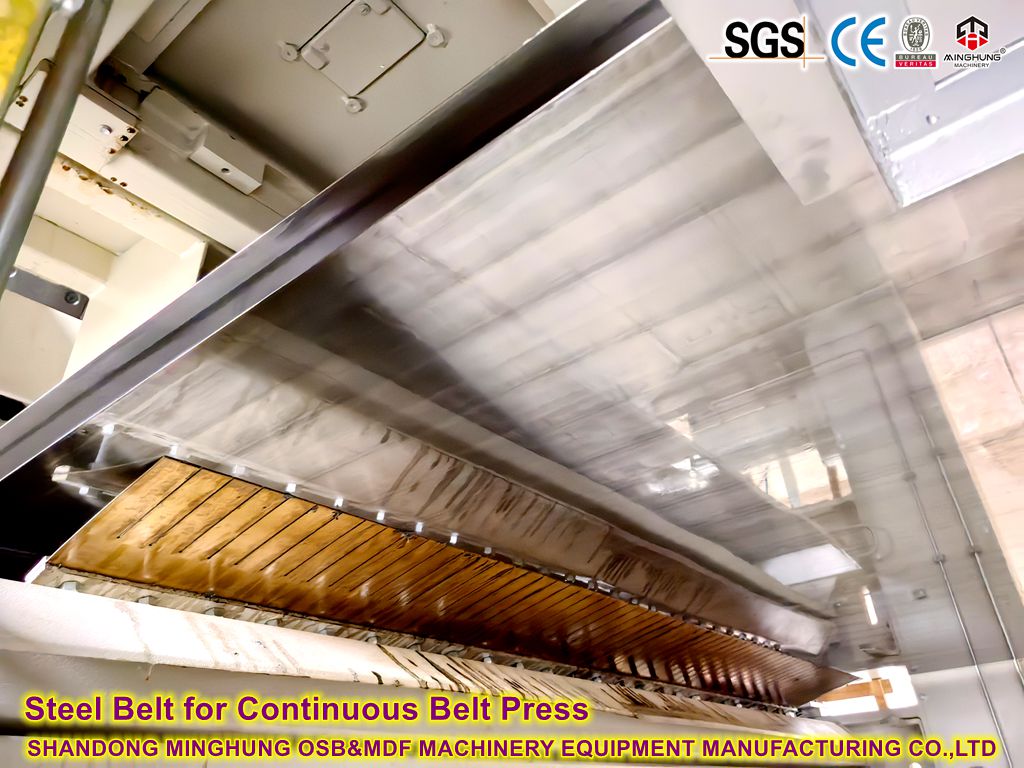
3. Steel Belt System:
Upper Steel Belt & Lower Steel Belt: Two seamless, endless, special alloy steel belts, wide (matching panel width) and very long (covering the entire press length plus margin).
Function: Protect platen surfaces from wear and contamination; uniformly transfer pressure and heat to the mat; create smooth panel surfaces; convey the mat continuously through the press.
Drive System: Powerful motors drive the main drums, propelling the belts. Speed is adjustable to control pressing time.
Tensioning System: Maintains constant, appropriate belt tension during operation, preventing slippage and misalignment.
Tracking System (Edge Guide): Automatically monitors and adjusts belt path, preventing lateral deviation that could damage equipment.
Support Rolls/Sliders: Densely arranged rolls or low-friction material sliders inside the belts (facing the platens) support the belts, minimizing deformation and running resistance.
Cleaning & Lubrication System: Removes residues (resin, wood particles) from belt surfaces and applies special high-temperature lubricant to reduce friction between belts and platens/support elements.
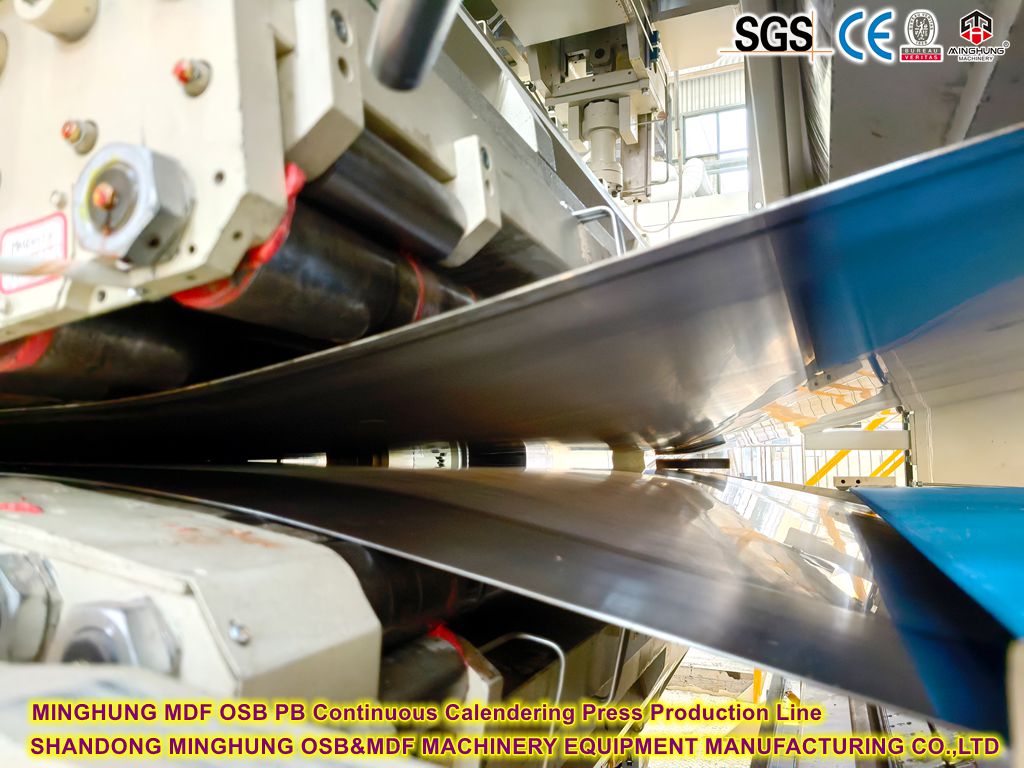
two Steel Belts
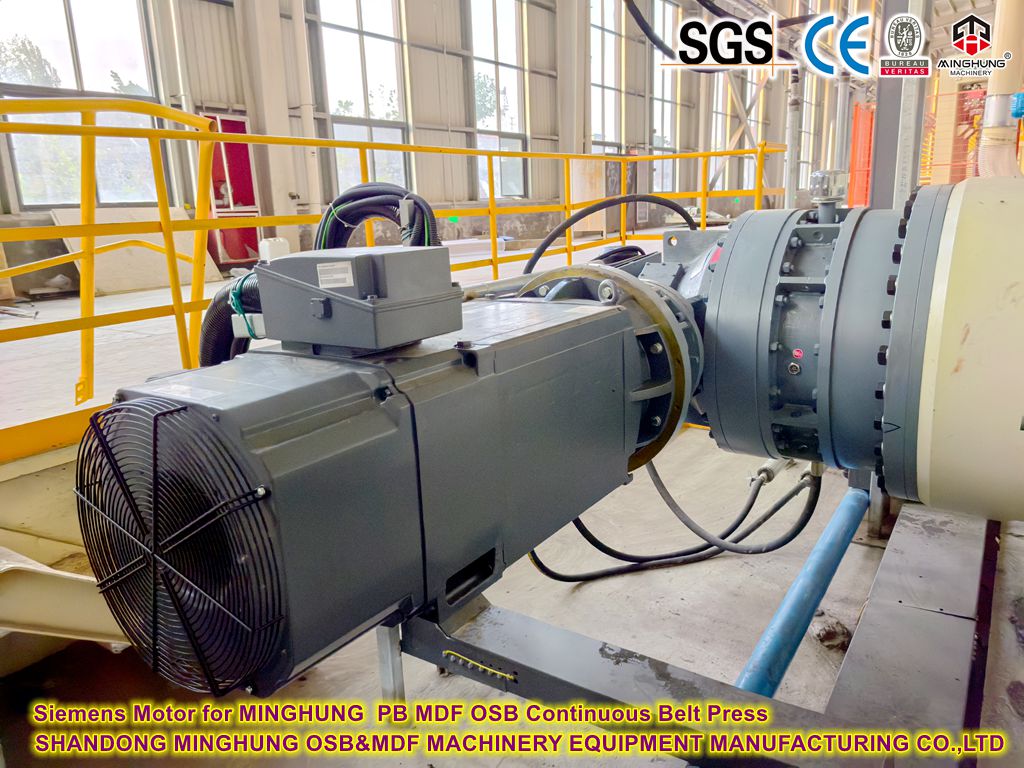
siemens motor
4. Hydraulic System:
(1)High-Pressure Pump Station: Provides massive hydraulic power.
(2)Main Hydraulic Cylinders: Numerous cylinders (dozens or even hundreds), distributed along the press length, drive the upper platen to apply pressure.
(3)Core-Zoned Pressure Control (ZPC):
One of the core technologies of the CFP. Hydraulic cylinders are grouped into multiple independently controlled pressure zones (typically 10-30 or more, along the press length).
Each pressure zone can be independently set and precisely controlled.
Purpose:
Simulate the mat's thickness and density changes during pressing (high pressure needed for initial compression at the inlet, low pressure needed for controlled release at the outlet).
Compensate for mat variations (moisture content, mat uniformity) in real-time by adjusting local pressure, ensuring highly uniform panel thickness and density across the length and width.
Optimize the panel's vertical density profile (typically requiring higher surface density and lower core density).
(4) Control system: A complex PLC or DCS system collects data from pressure sensors in each zone in real time and accurately controls the pressure output of each hydraulic cylinder.

Hydraulic System
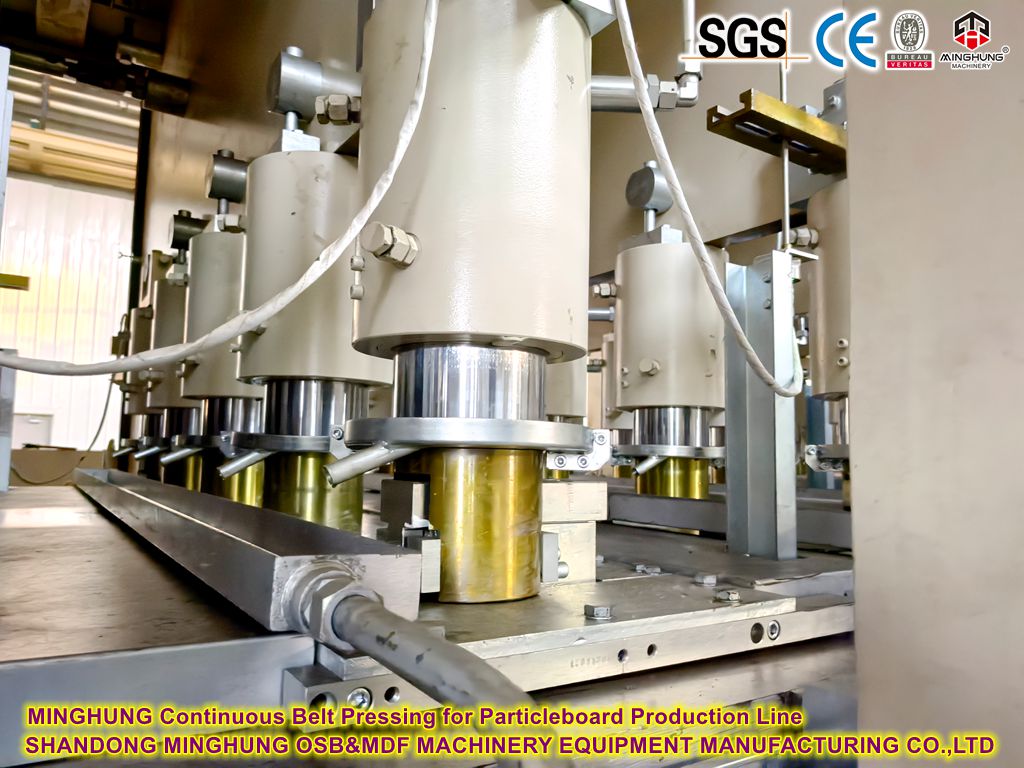
High-Pressure Pump Station
5. Heating System:
Heat Transfer Medium: Primarily high-temperature thermal oil (excellent thermal stability, precise temperature control, up to ~300°C+), less commonly high-pressure saturated steam (lower cost, but slightly inferior temperature control precision and maximum temperature).
Circulation System: Includes heating furnace (fuel oil, gas, or electric), high-temperature circulation pumps, expansion tank, heat exchangers (if needed), complex piping and valve systems.
Zoned Temperature Control: Platens are typically divided into multiple independently controlled temperature zones along the length. This allows setting different temperature profiles (e.g., slightly lower inlet temperature to prevent surface pre-cure, peak curing temperature in the middle zones, controlled cooling near the outlet to aid pressure release). Precise temperature control is vital for resin cure rate, panel properties, and avoiding defects (pre-cured layers, delamination).
6. Infeed & Discharge Systems:
Infeed Conveyor: Usually a steel belt or heavy roller table matching the press width, feeding the mat smoothly and centered into the press inlet.
Inlet Seals/Scrapers: Prevent mat debris from entering the press interior and damaging belts or platens.
Discharge Conveyor: Receives the hot green board and transports it quickly away from the press for cooling.
Outlet Seals/Exhaust: Large volumes of steam and volatiles generated during pressing must be effectively extracted (typically connected to dust collection and exhaust treatment systems), while preventing ambient air ingress affecting the temperature field.
7. Lubrication System:
Sprays special high-temperature synthetic lubricant between the steel belts and platens/support elements, and onto support rolls.
Significantly reduces friction, protects belt and platen surfaces, and lowers drive power consumption.
8. Control System:
Brain: Highly automated, based on industrial PC, PLC or DCS.
Functions:
Coordinates all subsystems (hydraulic pressure zones, belt speed, temperature zones, lubrication, infeed/discharge).
Sets and monitors pressing process parameters (target thickness, pressure setpoints per zone, temperature setpoints per zone, belt speed/pressing time).
Real-time data acquisition, display, logging, and alarm generation.
Fault diagnostics and safety interlock protection.
Communication and coordination with other line sections (forming, pre-press, finishing).
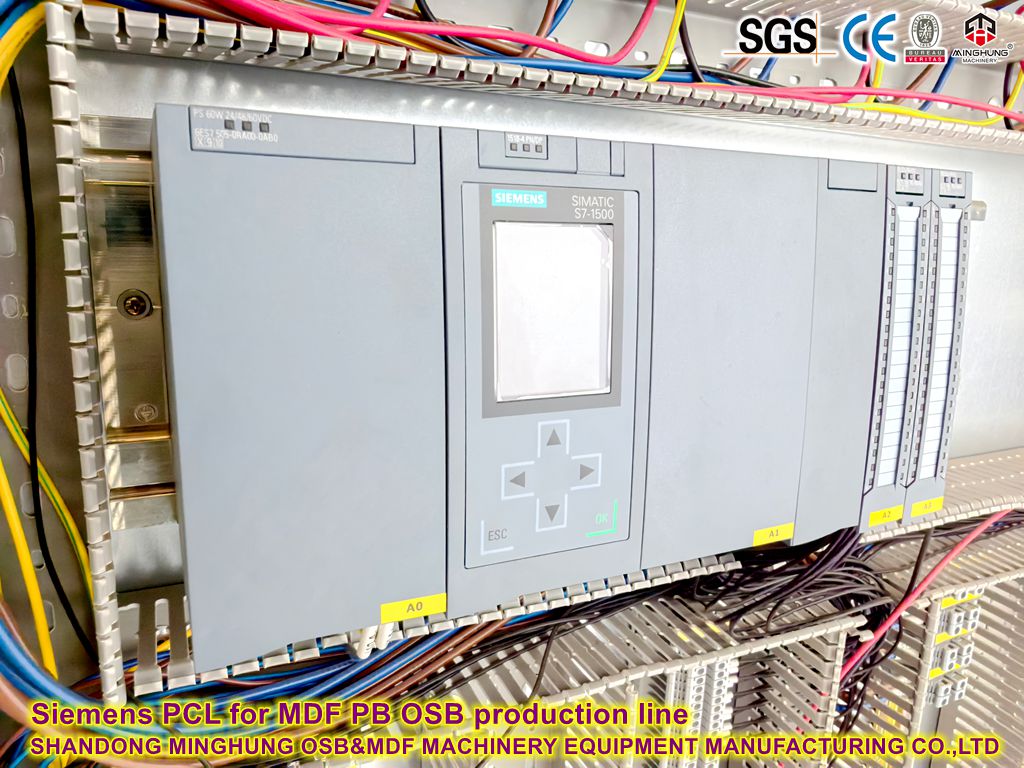
siemens PLC for OSB production line

HMI
9. Auxiliary Systems:
Cooling System: For hydraulic oil and critical components.
Safety Devices: Emergency stop buttons, safety light curtains, over-pressure protection, over-temperature protection, belt break detection, etc.
Monitoring Devices: Thickness scanners (online or at exit), belt position sensors, temperature/pressure sensors, etc.

